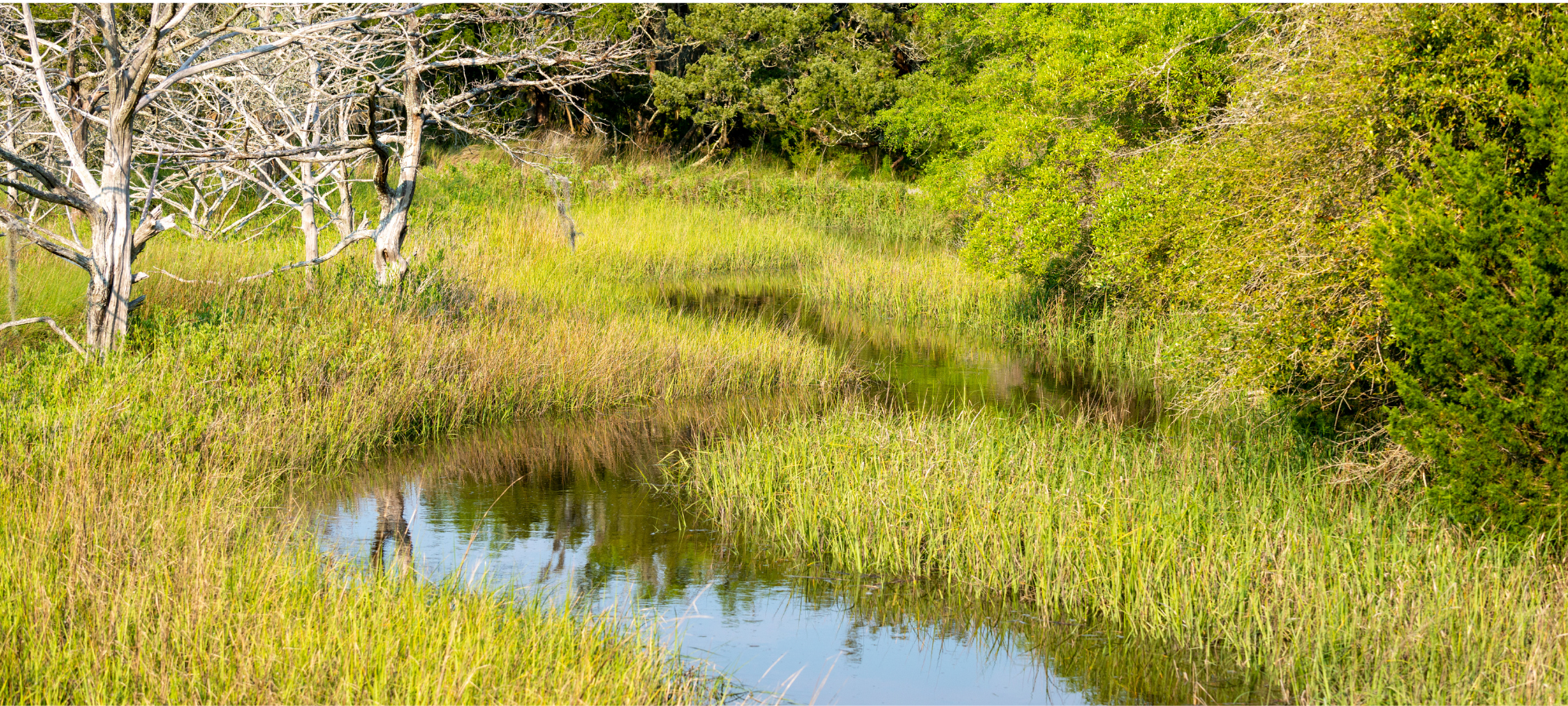Wetland delineations focus on identifying and mapping wetland boundaries and understanding their ecological characteristics, while jurisdictional delineations determine whether a wetland falls under the regulatory authority of specific agencies or jurisdictions. A jurisdictional delineation occurs after the wetland delineation and is typically done by USACE or EPA. A jurisdictional determination will be issued if the USACE determines that the property contains wetlands that are regulated.
In other words, a wetland delineation is the first step in determining whether a property contains wetlands that are regulated by the USACE. If a wetland delineation is conducted, and the USACE determines that the property contains wetlands that are regulated, then a jurisdictional determination will be issued.
These actions are related concepts used in environmental assessments, particularly in the context of regulatory compliance with wetland protection laws and regulations. While they are related, there are some key differences between the three.
Wetland Delineations
Wetland delineation refers to the process of identifying and mapping the boundaries and characteristics of wetlands on a particular site. It involves a detailed assessment of the site’s physical characteristics, vegetation, soils, and hydrology to determine whether an area meets the criteria for classification as a wetland. Wetland delineations are typically conducted by qualified wetland delineators who use a variety of methods, such as field surveys, aerial photography, and maps, following established protocols, such as those provided by the U.S. Army Corps of Engineers (USACE) or other regulatory bodies. The results of a wetland delineation are typically a map or report that identifies the aquatic resources on the property.
The goal of wetland delineation is to identify the presence, extent, and boundaries of wetlands within a specific area. It is primarily an ecological assessment and helps in understanding the ecological functions and values associated with wetlands.
SummitWest performs field assessments to identify and map the boundaries of wetlands on a specific site and understands the importance of accurate, sub-meter boundary data collection.

Jurisdictional delineation
A jurisdictional delineation is the process of determining whether the aquatic resources identified in a wetland delineation are regulated by the U.S. Army Corps of Engineers (USACE) under section 404 of the Clean Water Act and/or Section 10 of the Rivers and Harbors Act. This is done by the USACE, and it involves a review of the wetland delineation and other factors, such as the proposed activities on the property. The results of a jurisdictional delineation are typically a written decision that states whether the aquatic resources on the property are regulated (this decision is known as the Jurisdictional Determination).
In short, a jurisdictional delineation is a specific type of wetland delineation that is conducted to determine whether the aquatic resources identified in a wetland delineation are regulated by the USACE.
Jurisdictional determination
A Jurisdictional determination determines whether a wetland is considered “jurisdictional” under a specific regulatory framework. For example, in the United States, wetlands fall under the jurisdiction of the USACE and the U.S. Environmental Protection Agency (EPA) under the Clean Water Act. A wetland is considered jurisdictional if it meets the criteria outlined in the applicable regulations, such as the presence of hydrophytic vegetation, hydric soils, and wetland hydrology. If a wetland meets this criteria, a determination is given.
The purpose of jurisdictional determination is to determine whether a wetland is subject to regulatory permitting requirements and protections. It helps determine the extent to which a wetland is subject to regulatory oversight, such as the need for permits for activities that may impact wetlands, mitigation requirements, or potential penalties for non-compliance.
SummitWest’s team of wetland experts can navigate the regulatory landscape and perform jurisdictional determinations.
United States & California Wetlands and Waters Permits
It’s important to note that the specific permits required for a construction project will depend on various factors, including the project’s location, size, and potential impacts. Consulting with regulatory agencies, environmental professionals, or permitting experts is crucial to determine the precise permits needed and navigate the permitting process successfully.
These permits are aimed at ensuring compliance with state and federal regulations related to wetland protection, water quality, and environmental impacts. Below are just a few of the permits that you may need to consider. If you are in need of expertise, SummitWest has an experienced team ready to help!
In the United States, a 401 permit and a 1600 permit are specific permits required under the Clean Water Act (CWA) for activities that may impact wetlands or waters of the United States. Here’s an explanation of when these permits are needed:
Section 401 Permit:
A Section 401 permit, also known as a Water Quality Certification, is required under Section 401 of the Clean Water Act. This permit is issued by state or tribal authorities and is needed when a project or activity has the potential to discharge dredged or fill material into waters of the United States, including wetlands. The permit is intended to ensure that any such discharge complies with applicable water quality standards and other environmental requirements.
Examples of activities that may require a Section 401 permit include:
- Construction of bridges, dams, or other infrastructure that involves filling or dredging in waters of the United States.
- Land development or construction projects that impact wetlands or water bodies.
- Mining operations that may result in the discharge of dredged or fill material into water bodies.
The Section 401 permit is typically obtained through the relevant state or tribal environmental agency and is often required in conjunction with other permits, such as a Clean Water Act Section 404 permit.
Section 1600 Permit:
A Section 1600 permit is specific to California and is required under the California Fish and Game Code Section 1600 et seq. This permit, issued by the California Department of Fish and Wildlife (CDFW), is needed when a project or activity has the potential to impact certain waters, including wetlands or other bodies of water, and could harm fish and wildlife resources.
Examples of activities that may require a Section 1600 permit in California include:
- Alteration of watercourses, streams, or other aquatic habitats.
- Drainage or filling of wetlands.
- Activities that may harm endangered or threatened species or their habitats.
The Section 1600 permit ensures that proposed activities are consistent with California’s fish and wildlife conservation policies and provides mitigation measures to protect fish and wildlife resources.
Clean Water Act Section 404 Permit
While Section 404 permits are primarily regulated by the U.S. Army Corps of Engineers at the federal level, in California, the California State Water Resources Control Board and regional water quality control boards also play a role. Section 404 permits are required for projects that involve the discharge of dredged or fill material into waters of the United States, including wetlands. It is important to consult with the appropriate regional water quality control board to determine the specific requirements and processes for obtaining a Section 404 permit in California.
California Department of Fish and Wildlife (CDFW) Streambed Alteration Agreement
This agreement is required when construction activities may impact the bed, channel, or bank of a river, stream, or lake. It is aimed at protecting fish and wildlife resources and their habitats. The CDFW oversees the Streambed Alteration Agreement process and assesses the potential impacts of the project on sensitive species and habitats.
California Coastal Commission Permits
If your project is located within or near the California Coastal Zone, which encompasses the state’s coastal areas, you may need permits from the California Coastal Commission. The commission is responsible for regulating development and activities in the coastal zone to protect coastal resources, including wetlands and water bodies.
Regional Water Quality Control Board Permits
Depending on the location and nature of your construction project, you may need additional permits from the regional water quality control boards in California. These permits are aimed at ensuring compliance with water quality standards and addressing potential impacts on water bodies, wetlands, and associated habitats. The specific permits required will vary depending on the region and the project’s characteristics.
National Pollutant Discharge Elimination System (NPDES) Permit
If your project involves activities that may result in stormwater runoff or the discharge of pollutants into surface waters, you may need an NPDES permit. These permits are required to regulate stormwater discharges from construction sites and ensure compliance with water quality standards.
Need help with waters permits or delineations? Contact us today!
Vernal Pools
In California, vernal pools are unique and ecologically significant seasonal wetland habitats. They are temporary bodies of water that form during the rainy season and typically dry out during the summer months. Vernal pools are shallow depressions in the landscape that fill with water from rainfall and runoff, creating a distinct and specialized ecosystem.
SummitWest has vernal pool experts on staff who can map vernal pool boundaries, identify flora and fauna, and perform both wet and dry season protocol-level surveys for endangered fairy shrimp
Here’s why vernal pools matter:
- Biodiversity Hotspots: Vernal pools support a high level of biodiversity and are home to numerous plant and animal species, many of which are specially adapted to these unique habitats. They provide critical breeding and foraging grounds for various species, including endemic and rare plant species, fairy shrimp, tadpole shrimp, and vernal pool crustaceans.
- Rare and Endangered Species: Vernal pools in California are known to harbor several rare and endangered species. For example, the federally threatened vernal pool fairy shrimp and the endangered California tiger salamander are dependent on these specialized habitats for their survival. Protecting vernal pools is crucial for the conservation of these vulnerable species.
- Plant Diversity: Vernal pools support a rich array of plant species, including native grasses, wildflowers, and small herbs. Many of these plants have adapted to the unique hydrological patterns and soil characteristics of vernal pools. Some vernal pool plant species have evolved to germinate, grow, flower, and set seed within the short window of time when the pools are filled with water.
- Ecosystem Services: Vernal pools contribute important ecosystem services. They act as natural sponges, temporarily storing rainwater, which helps recharge groundwater and prevent flooding downstream. Additionally, vernal pools provide filtration and purification of water, contributing to improved water quality.
- Cultural and Educational Value: Vernal pools hold cultural significance for indigenous communities in California. They are often associated with traditional practices, rituals, and medicinal plant use. Moreover, vernal pools serve as living classrooms, offering valuable opportunities for scientific research, ecological education, and appreciation of California’s natural heritage.
Due to their ecological importance and vulnerability to various threats, including habitat destruction, urban development, and invasive species, vernal pools are protected under state and federal regulations. Activities that may impact vernal pools or their associated species often require permits and mitigation measures to ensure their conservation.
Conserving and restoring vernal pools is essential to safeguarding the unique biodiversity they support and maintaining the ecological balance of California’s diverse landscapes. SummitWest has experts skilled at collaborating with scientists, landowners, regulators, and the community to ensure the long-term survival of these vital habitats.



